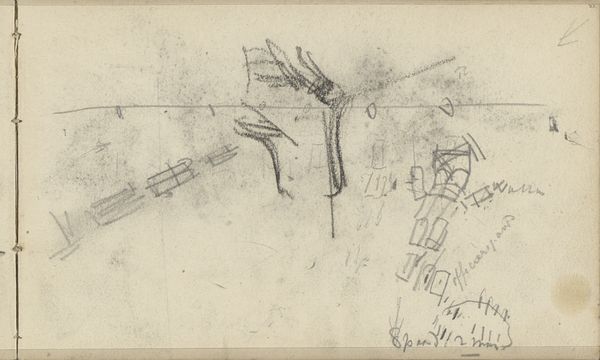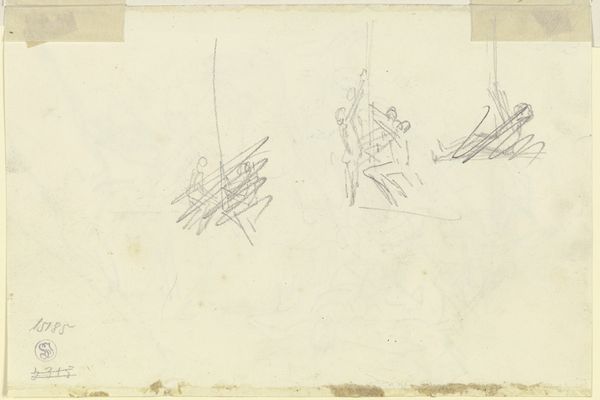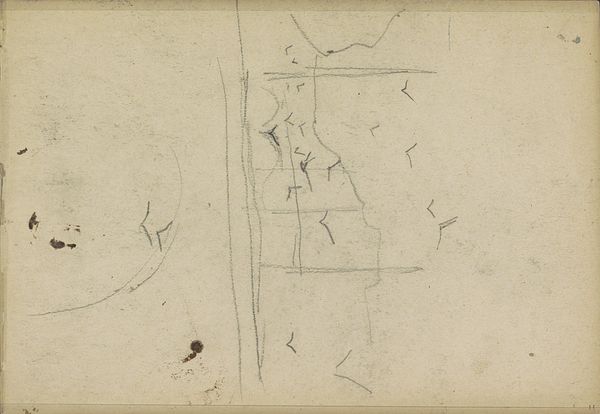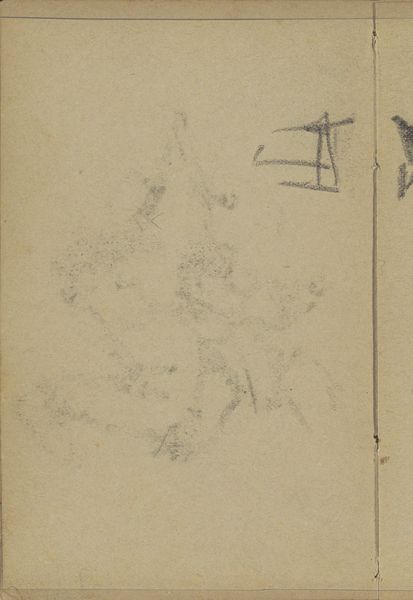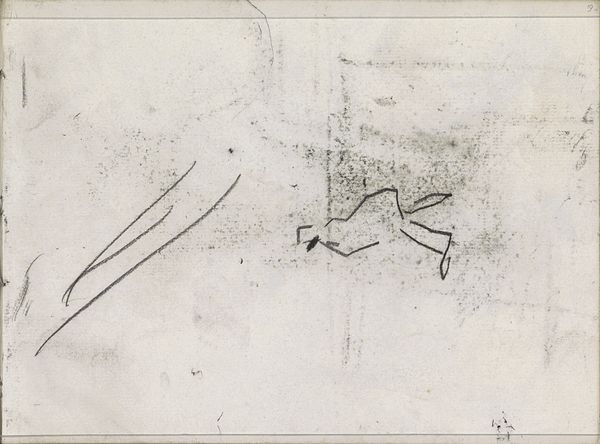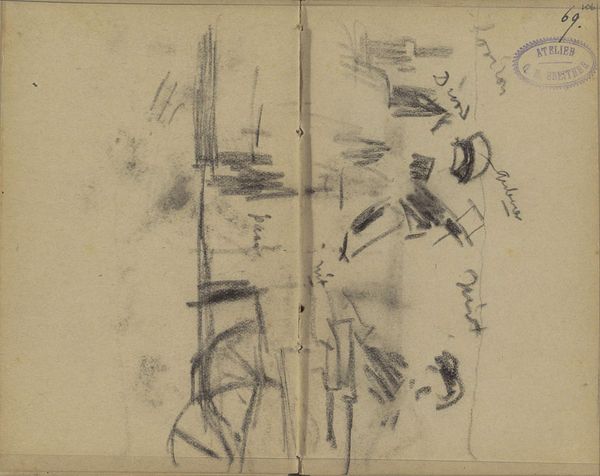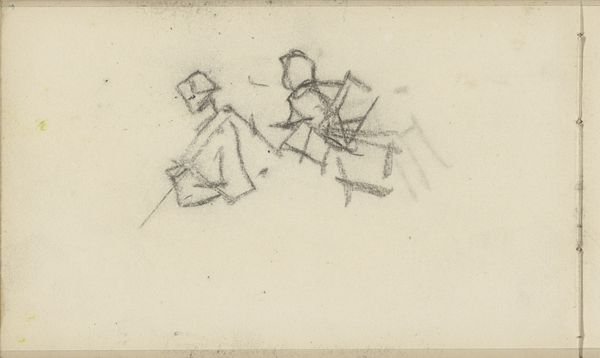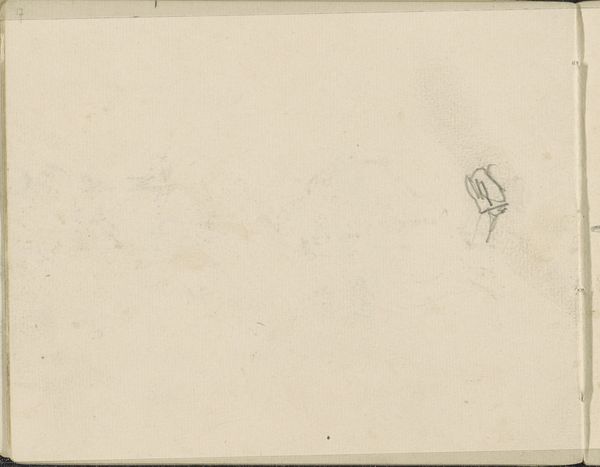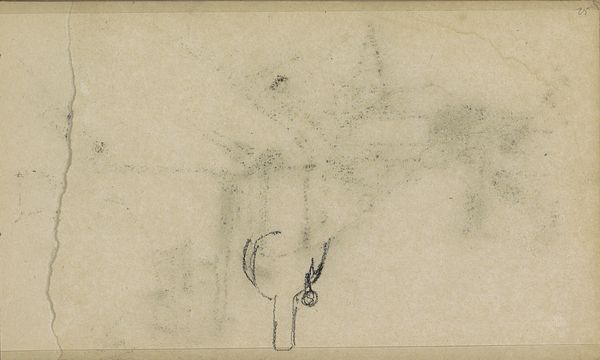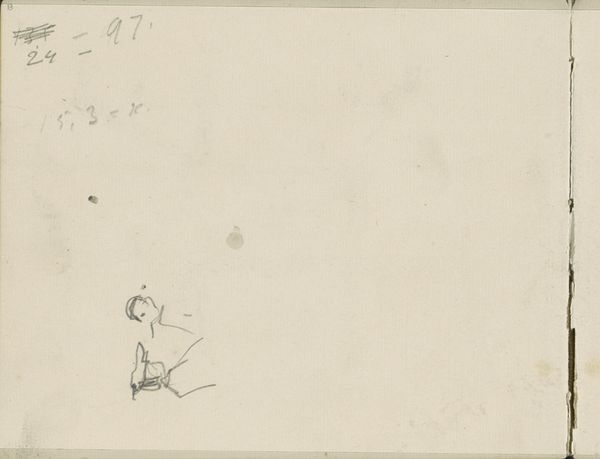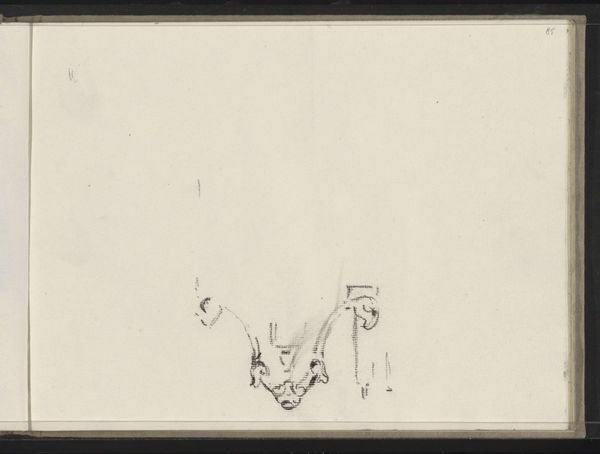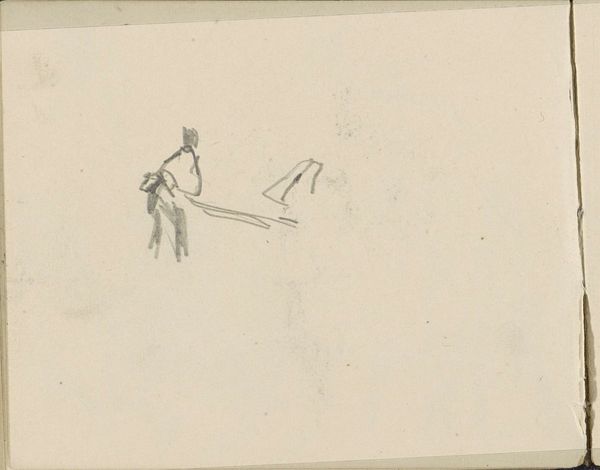
drawing, pencil
#
portrait
#
drawing
#
impressionism
#
pencil sketch
#
figuration
#
pencil
#
line
Copyright: Rijks Museum: Open Domain
Curator: Immediately, there's an unassuming quality here. It's incredibly fragile, like a memory about to fade. Editor: This is "Studie," a pencil drawing created by George Hendrik Breitner between 1884 and 1886. It's currently held at the Rijksmuseum. What details stand out to you from a materialist perspective? Curator: Well, first, the medium: a pencil sketch. It suggests a moment of immediate capture, a process deeply intertwined with the artist's hand and the ready availability of cheap, portable materials. Breitner could work anywhere. Think about the urban environments he favored, and the ability to quickly document that rapidly changing landscape. It democratizes image making. Editor: I find it striking how the figures almost dissolve into the paper, becoming part of the ground itself. There is a suggestion of movement and temporality. This was during a time of great social upheaval. How might these sketched figures relate to broader conversations of societal structure during Breitner’s time? Curator: The immediacy enabled by pencil meant that art was less about laboriously rendering details. Look at these ephemeral sketches—lines suggesting form, shadow, presence, more concerned with impression than representation. The study feels incomplete. It's this rejection of laborious academic methods which underscores its modern appeal. It breaks down established artistic production modes. Editor: It does present a counter-narrative. Consider the absence of detail—we aren’t given enough information to identify class or perhaps even gender with certainty. They exist in this ambiguous social space, challenging conventions of portraiture by refusing to solidify identities or to be easily categorized. Are these figures on the fringes? Are we looking at the unrepresented finally getting a voice through these sketches? Curator: Fascinating interpretation. But ultimately, pencil, paper, the artist's hand, this study is a raw artifact of making. The study allows us a closer connection to the artistic process. Editor: Absolutely. And placing it in a broader context makes us examine the artistic act within society's ever-shifting story. I find this engagement truly invigorating. Curator: Yes, there is value in uniting the philosophical and the material. Thank you.
Comments
No comments
Be the first to comment and join the conversation on the ultimate creative platform.
